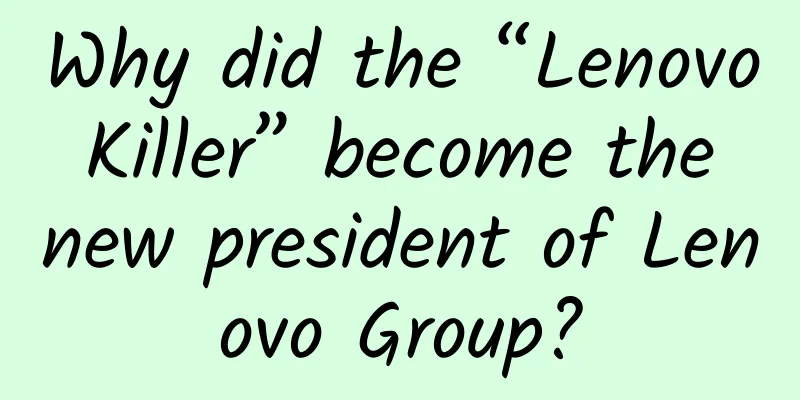The era of free is coming to an end: the inevitable choice of the new wave driven by technology

|
We have experienced a very magical free era. Music is free, software is free, videos are free, hardware is sold at cost, etc. Chris Anderson even wrote a book called "Free: The Future of Business". But the wind direction seems to be changing. LeTV, which is extremely aggressive in hardware, is caught in a debt crisis, and video websites have begun to actively launch paid services. It seems that the era of the Internet represented by free is coming to an end. The code behind free The core issue behind free is still economic issue. Let's assume that the development cost of a tool app is 2 million yuan, and then assume that it has 100 million users, and each user has a 2-year usage cycle, then the cost of spreading the development cost to each user is 0.01 yuan. At the same time, if the income from each user in two years is 40 yuan (through advertising, games, etc.), then this software does not need to be charged at all. In extreme cases, it can even be paid to aggressively acquire users. This is the fundamental reason why Internet companies were so keen on burning money before. For every additional user, it can earn more than ten or even dozens of yuan. 360's Mr. Zhou was the first to realize this, so he made his antivirus software free and summarized his own classic product development methodology: product-driven, short-cycle rapid iteration, rigid demand and high frequency, single point breakthrough, horizontal expansion. In contrast, McAfee seems to have not yet come around to this idea. But just like any methodology or model always has its own boundaries, the two most striking points in the entire Internet era are: video and music, which completely violate the general rules of the Internet era. Whether it is iQiyi or QQ Music and other products, their DAU ranks very high among various apps (basically in the top 10), but they just can't make a profit. The reason behind it is not complicated, and it can be explained with the above example: Assuming that the income that can be obtained from each user remains unchanged at 40 yuan for two years, then as long as the copyright, bandwidth, storage, and personnel costs in two years exceed 4 billion, then the company will lose money. The Internet model is obviously not omnipotent, but has its own clear boundaries, and its profit model is actually quite fragile. The above account can also be extended in time and space to form various variants of the algorithm. For example, if the average life cycle of a user is 5 years, then I can even subsidize the money that can be earned in the first two years. In this way, as long as the user is in my hands, I will have the opportunity to make the money back in the next 3 years. Free services in the Internet era are supported by the following points: low user acquisition costs, mature backend monetization systems, and the ability to make money by simply plugging in (it’s hard for normal people to imagine how powerful Facebook and Google’s advertising systems have become). However, the value of the entry point should not be overestimated. On average, 20 yuan a year is about right, and if it’s system-level, it should be higher. The entanglements and traps behind free hardware When the backend monetization of the Internet and the future discount in time and space are applied to hardware, things become interesting. Hardware companies will face a very embarrassing judgment: Are your users price sensitive or insensitive? If your users are price sensitive, then if you don’t lower your prices, your competitors will likely use the money from back-end monetization and future money to attack you. If your brand and product itself do not have any premium, then you will be defeated. Therefore, in order to avoid passive price cuts, Internet companies like to actively lower product prices in the above way. At this time, other competitors are in an awkward position. They must decide whether to follow or not. If they don’t follow, they will lose customers, and if they follow, they will not make money. In this way, the entire ecosystem will fall into a state of low-level competition. Because the above story doesn't make sense, there is basically no channel for back-end monetization in hardware: the user acquisition cost for hardware products is very high, the number of users grows very slowly, and there is no back-end monetization system. The combination of these three points means that the capital required to be invested and the cycle of burning money have become extremely long, and the imbalance between income and expenditure will be even worse than that of video and music. Suppose we make a camera product, and the product itself does not make money, then it may take 5 years for this product to break through 5 million DAU. In these five years, the camera cannot be connected to an advertising system like Google to realize back-end monetization, which means that R&D, promotion, new product development, etc. will continue to lose money in 5 years (300 million+ in 5 years), but the final result is 5 million DAU, and it is not known how these 5 million DAU can be monetized. Obviously, this is not a good business. This idea of hardware not making money has another hidden drawback: if the product itself can establish a brand, such as a mobile phone, then the above approach is harmful to brand building. This approach may establish a certain degree of popularity, but it is generally poor in establishing a good reputation. In the above ecosystem, due to the low level of competition between each other, it is usually impossible to make a real big investment in research and development, nor to create a real boutique, which is obviously not conducive to building a brand. So things become very simple: suppose you need to lose X billion in five years to increase sales, and then bet that you can make the money back in the next five years, and think this is a good business, then you can give priority to low prices to increase sales. Otherwise, if you make hardware, you still have to return to making brands, otherwise the best outcome is a lose-lose situation. Is the new wave of technology-driven innovation suitable for the free model? Once when I was chatting with a colleague in the company, we discussed a very interesting topic: in the Internet era, the PhD brothers who do deep learning and acoustic algorithms are actually a little lost. These things are very difficult to do, but they don’t actually generate that much cash value. What can really be realized quickly is the ability of products and operations. For example, even if there are more PhDs, it is estimated that there is no way to quickly make Momo popular. But now things are exactly the opposite. Deep learning and acoustic algorithms have raised the entry threshold very high. Without high-end combat power (for example, Sound Intelligence Technology has 20+ PhDs), you have no qualifications to intervene, especially in the field of B2B, which is a technology-based field. The protagonists in different eras are indeed different. This change in industry characteristics will further lead to the new wave of technology-driven and previous Internet models being different in nature, so it is very necessary to re-examine the free model from the perspective of the new wave. The technology-driven wave has the following characteristics: First, the entry threshold is high and there are fewer players. For example, in the field of intelligent voice interaction based on multi-microphone arrays, there are only a few players such as iFlytek and SoundAI. Second, this is destined to be a long-term race. Products that focus on products, operations and network effects can acquire a large number of customers in a very short period of time and increase their value quickly. It took Momo only three years from its founding to gaining over 100 million users, but technology companies obviously need greater strategic patience to establish technological advantages and continue to develop customers. These two thresholds challenge the idea of free services from another dimension: in a medium- and long-term field with few players, whether to spend money for free to acquire users or to establish a healthy business model to maintain technological advantages does not seem to be a difficult choice. Interestingly, the big companies that are most qualified to spend money are no longer thinking about acquiring users for free, such as Amazon, Google, and Microsoft: Amazon's Speech and Semantics service pricing Google Speech Recognition Service Pricing Microsoft Voice Service Price List These big companies may have seen two similar problems: First Voice needs a gradual process to grow in volume, and spending money cannot quickly promote growth; Second, there is currently no backend monetization model for voice interaction. summary If one day AR/VR, robots, etc. really become the next generation of mature general-purpose computing platforms, there may once again be an opportunity to acquire customers extremely cheaply with software. At that time, if the back-end monetization model is successful, the free model may very likely rise again. But at the moment, the free idea is indeed not suitable for hardware or the new wave of technology-driven development. As a winner of Toutiao's Qingyun Plan and Baijiahao's Bai+ Plan, the 2019 Baidu Digital Author of the Year, the Baijiahao's Most Popular Author in the Technology Field, the 2019 Sogou Technology and Culture Author, and the 2021 Baijiahao Quarterly Influential Creator, he has won many awards, including the 2013 Sohu Best Industry Media Person, the 2015 China New Media Entrepreneurship Competition Beijing Third Place, the 2015 Guangmang Experience Award, the 2015 China New Media Entrepreneurship Competition Finals Third Place, and the 2018 Baidu Dynamic Annual Powerful Celebrity. |
<<: Tesla Model S driver survives German autobahn crash
>>: Even Tesla is not immune to charging problems
Recommend
The latest news on Shanghai’s closure period in 2022: How many days will the closure last? When will the epidemic end and things return to normal?
Recently, new cases have appeared in Jilin, Changc...
Pollen is silent, but it just makes you cry - see here for how to deal with it!
The peak pollen season in Beijing this spring has...
Information flow advertising creative optimization guide!
The core of information flow advertising lies in ...
Controlled nuclear fusion energy: How far is humanity from achieving energy freedom?
On the afternoon of August 25, China National Nuc...
Many places have reported that the epidemic is related to self-driving travel... When traveling during the summer vacation, it is important to remember these latest epidemic prevention and control tips!
A busy semester It’s a good time to travel during...
Snowy mountains are "hot" warning! The Alps are experiencing the most outrageous glacier melting in 60 years!
The Alps is a famous ski resort and the cradle of...
5K screen 27-inch iMac foreign media review summary
The Retina 5K iMac has already reached many forei...
2019 Bilibili product operation analysis report!
bilibili, also known as Bilibili or simply B Stat...
Tips and precautions for optimizing GuangDianTong delivery effects!
Guangdiantong is one of Tencent’s two major infor...
@2022 College Entrance Examination, please accept this college entrance examination tips
The 2022 National College Entrance Examination is...
Accenture: Meeting the needs of online consumers
199IT original compilation To understand the onli...
Mushrooms growing on apples and garlic? A doctor from the Chinese Academy of Sciences bought and tasted them...
Edit: April Last month Zhejiang continues to expe...
Private cars are cleaned up and turned into express cars: paving the way for Didi Kuaidi's listing
On May 7, Didi launched the Didi Express project ...









